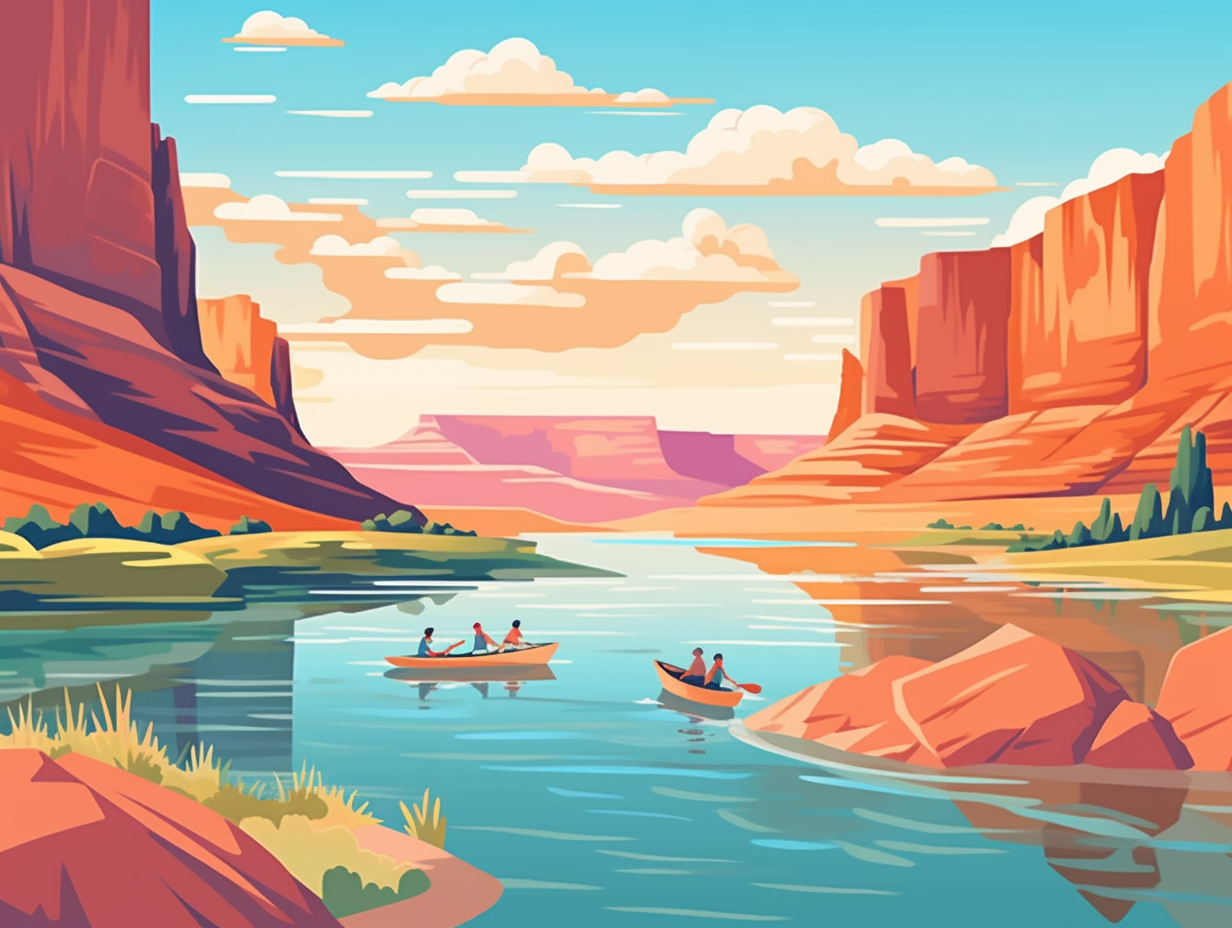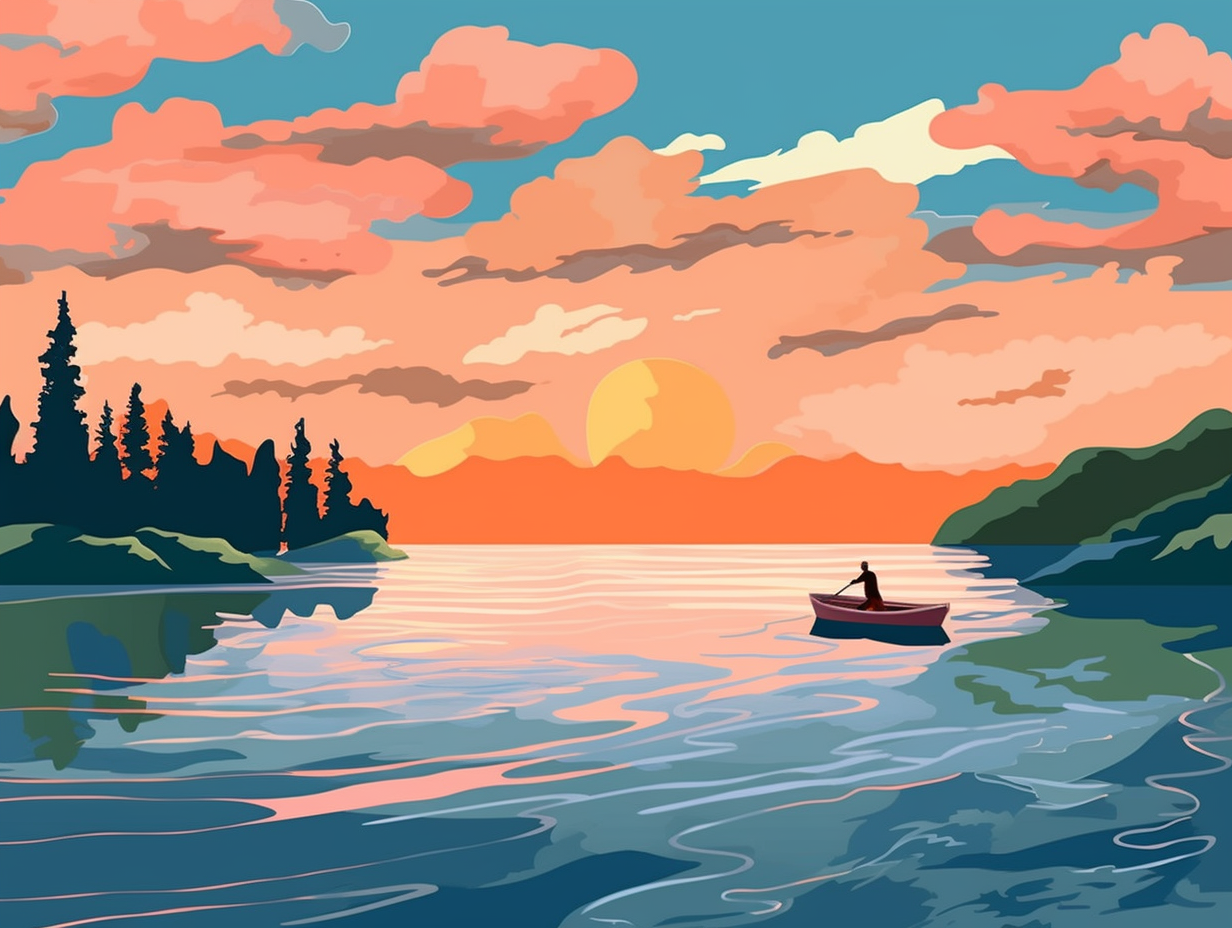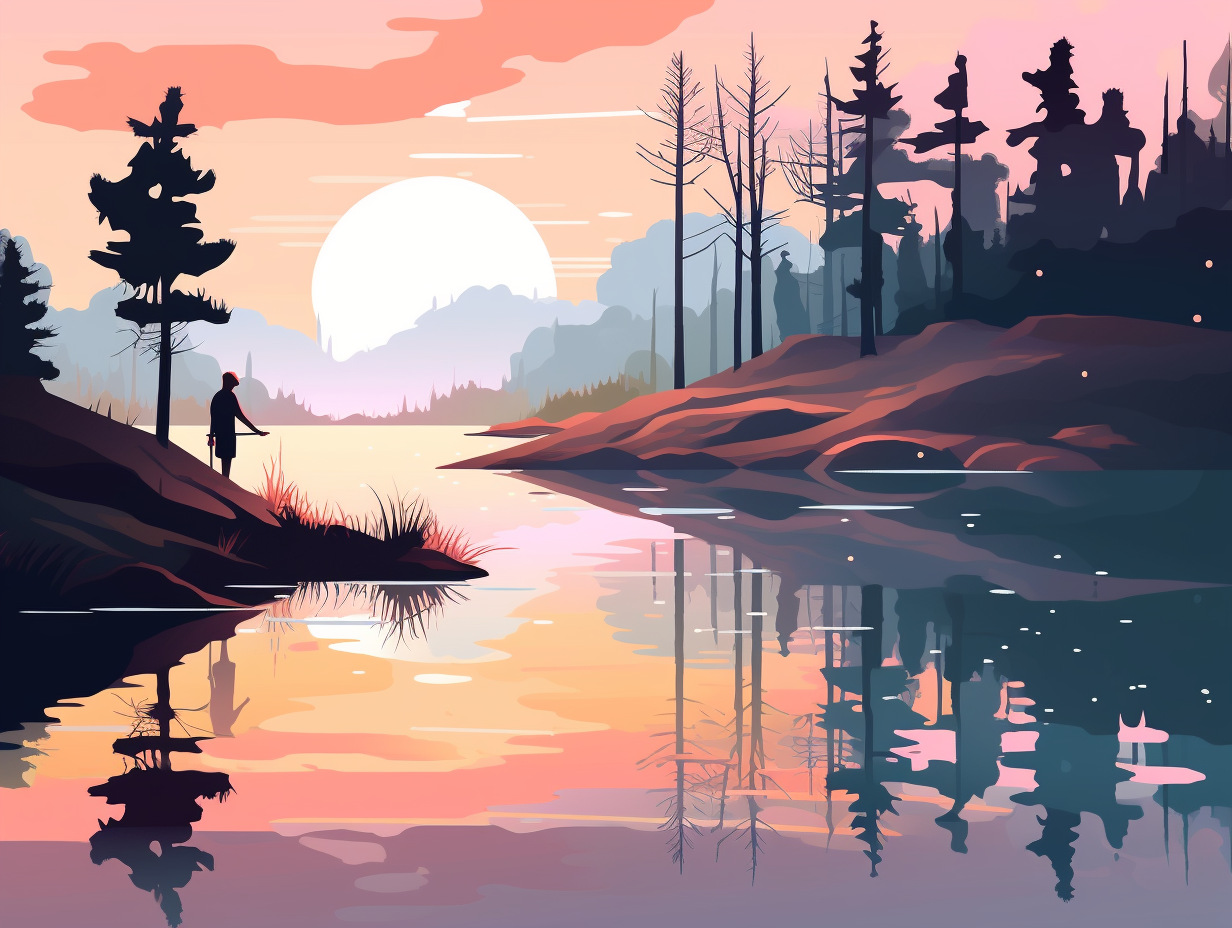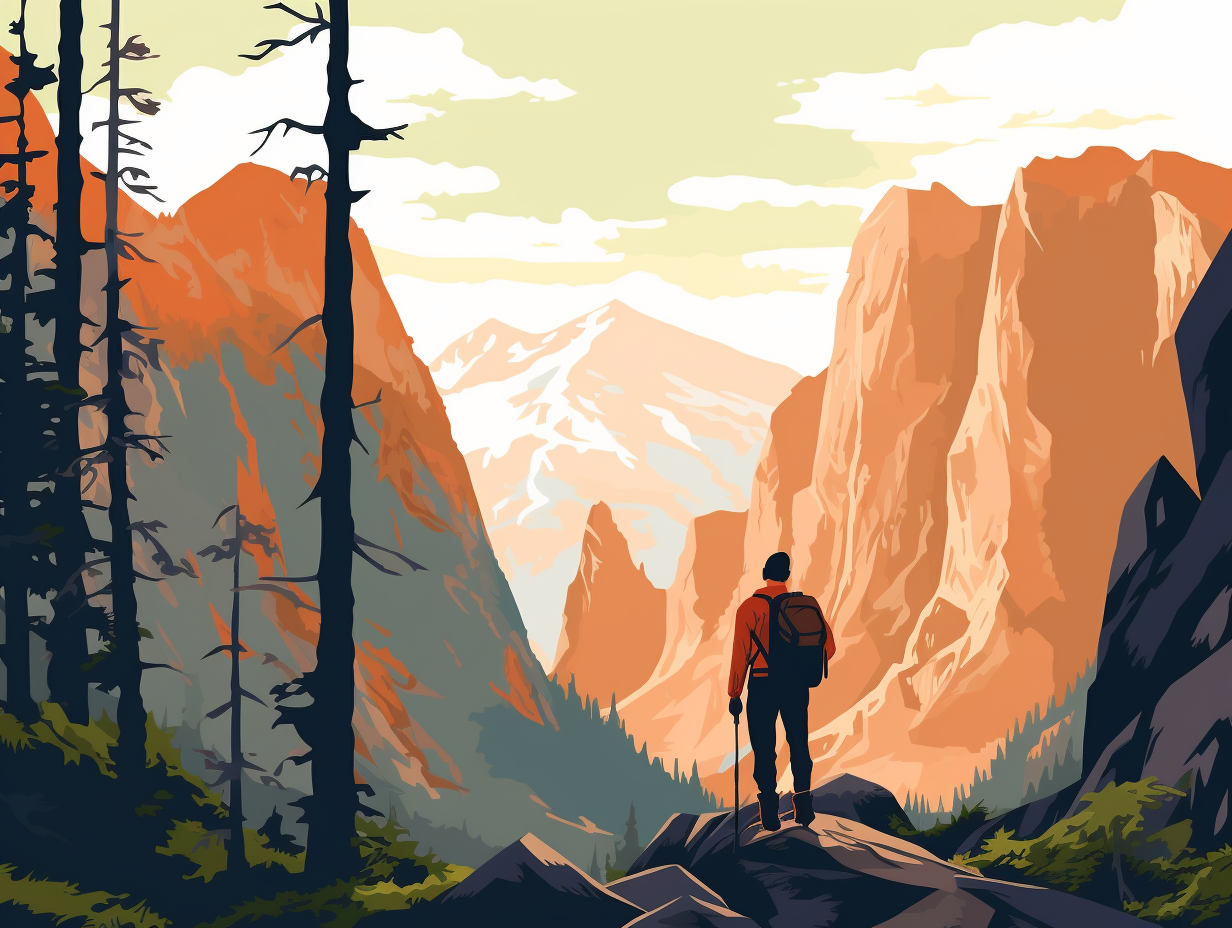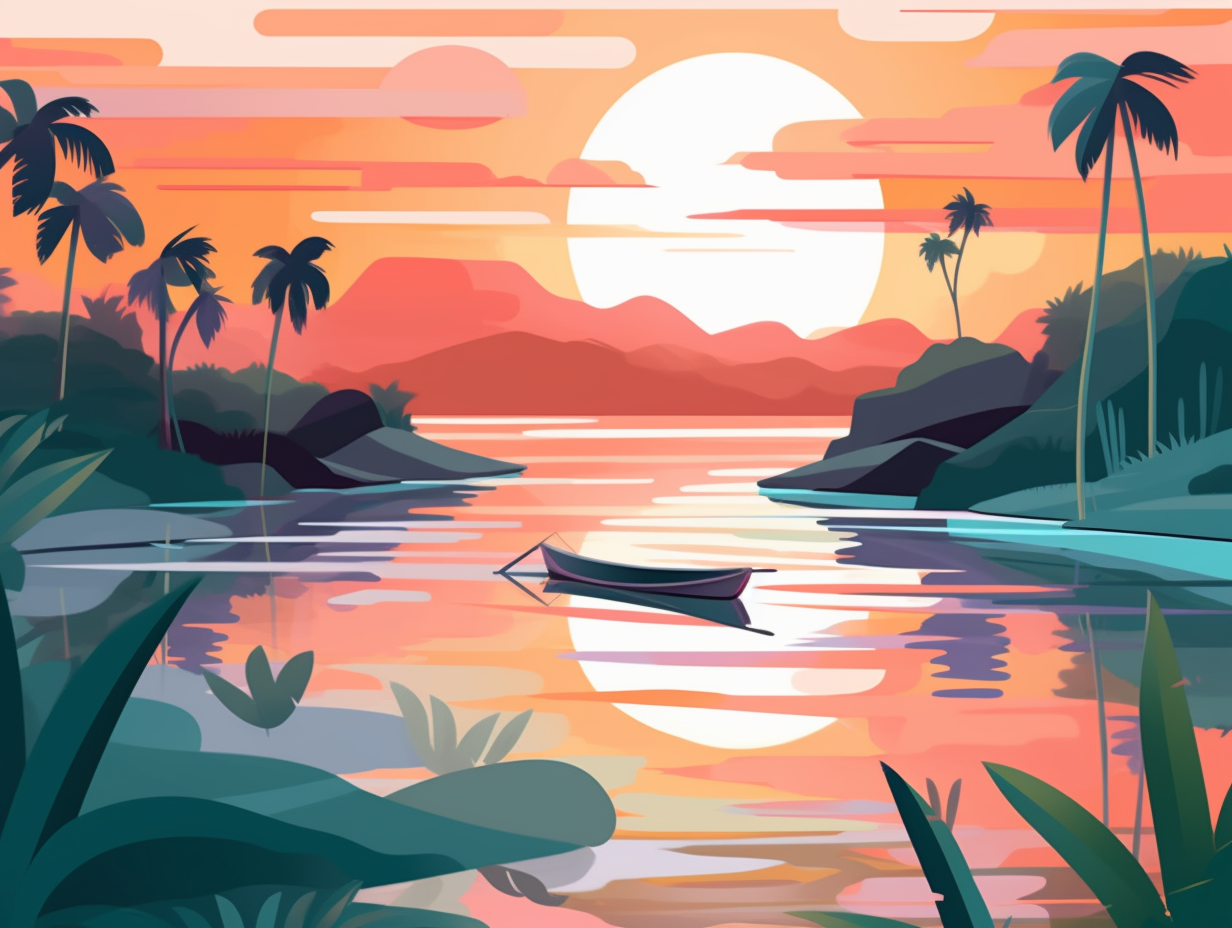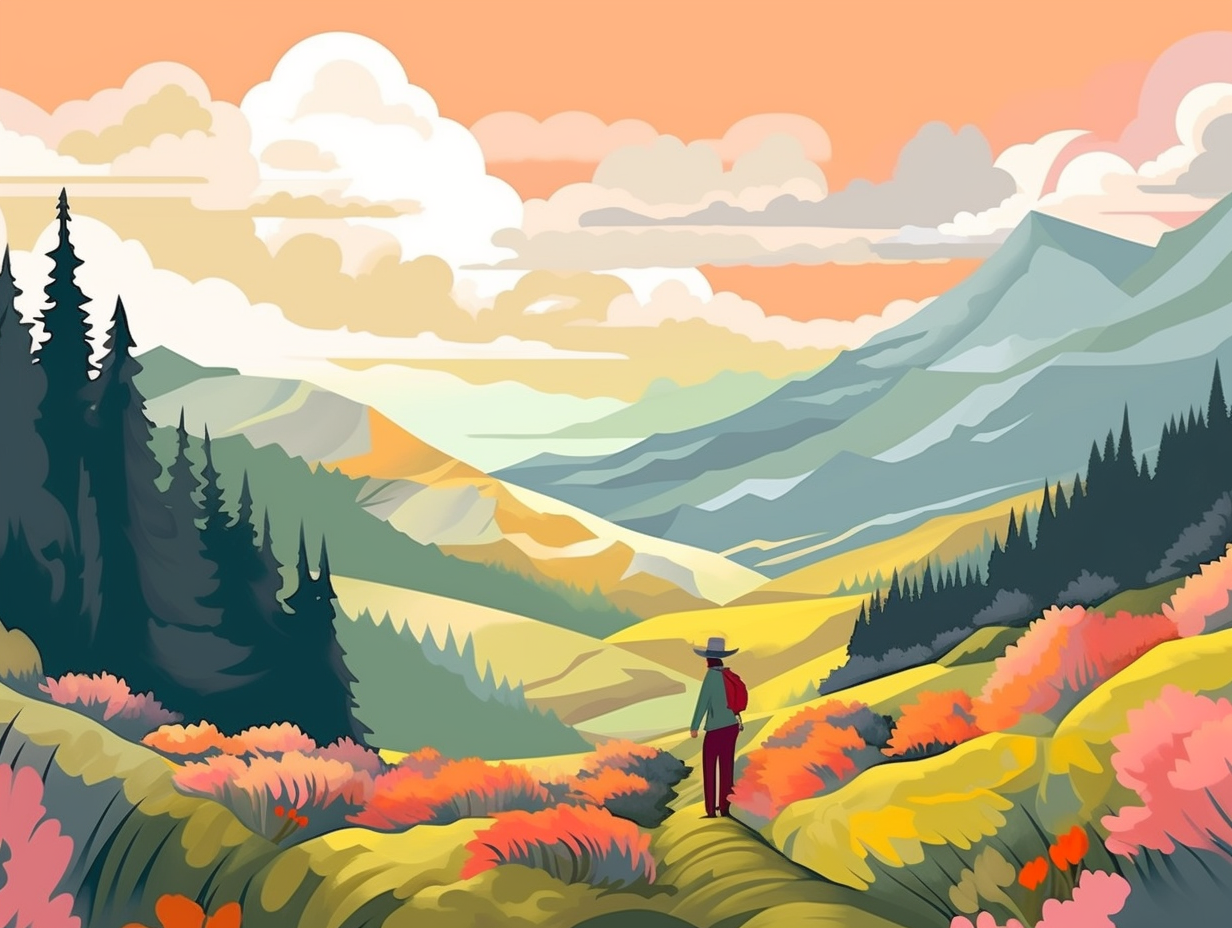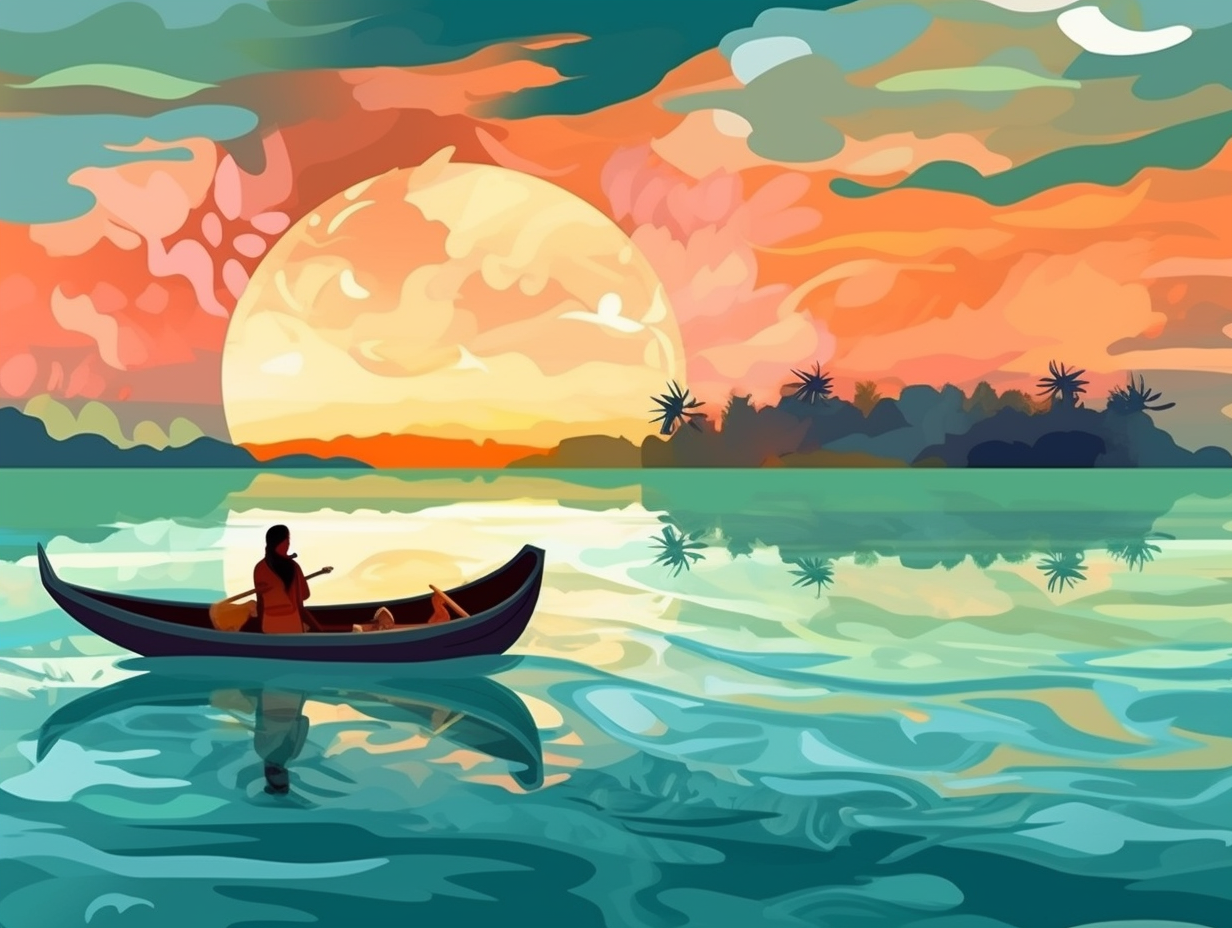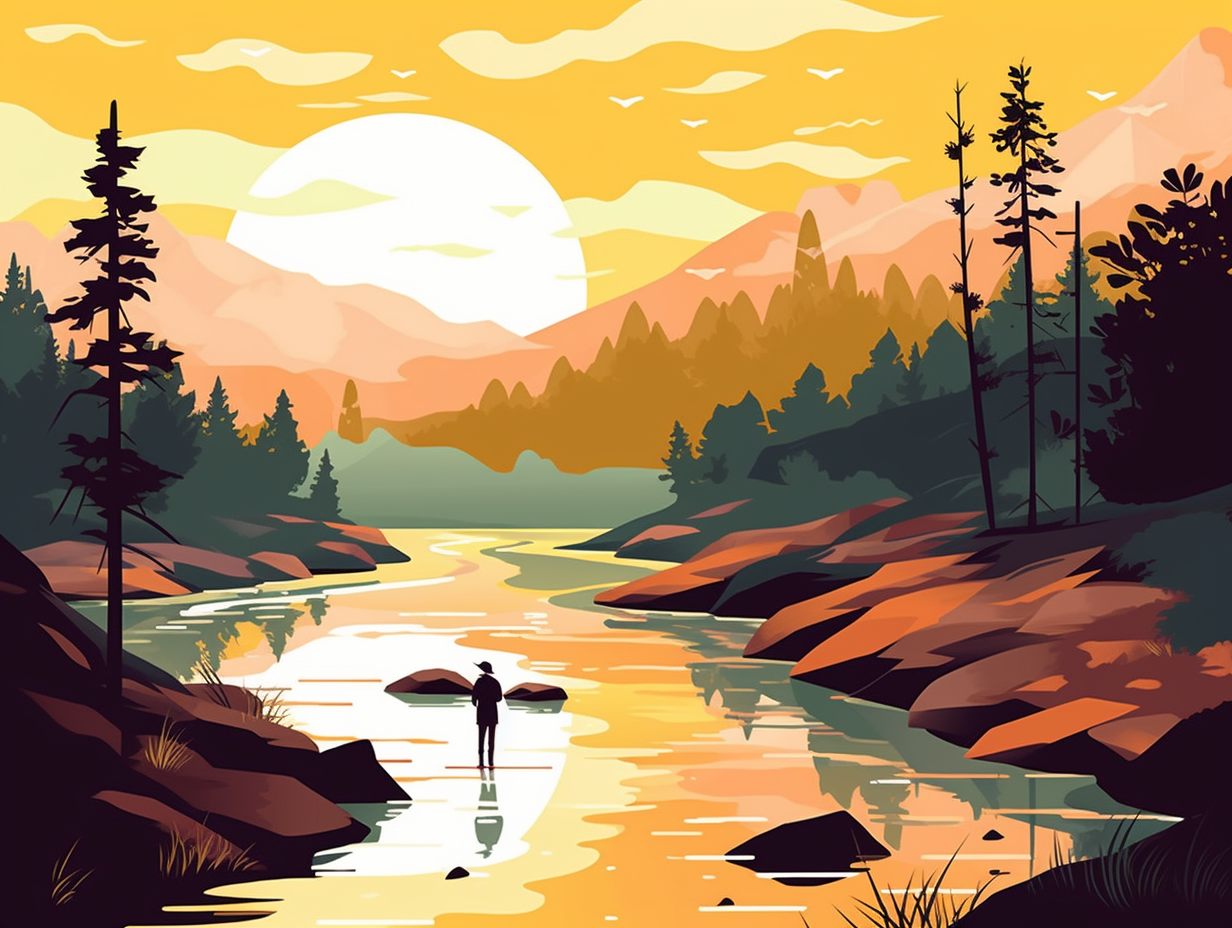Discover the Top 13 Fun Facts About the Mighty Missouri River: Nature's Hidden Wonders Await!

1. Missouri's Name Game
Before the Missouri River was Channeling its "Missourious" DeNiro impression and making explorers an offer they couldn't refuse: The 2,341-mile long river was discovered by French explorers Louis Joliet and Father Jacques Marquette in the 18th century, known by various names like Minni-Shu-Shu, Smoky-Water, and Wakpa-Sose-Tanka, it played a big role in transportation, commerce, and providing sustenance for natives and fur traders alike, including those like De la Verendrye and explorers Lewis and Clark.
Source => usbr.gov
2. Influencer of Agriculture
If the Missouri River were an online influencer, it would be drowning in likes, shares, and most importantly, oats: this North American river not only holds the title for the longest river, but it also supplies our beloved nation with more than one-third of its wheat, flax, barley, and oats, securing its agricultural VIP status.
Source => americanrivers.org
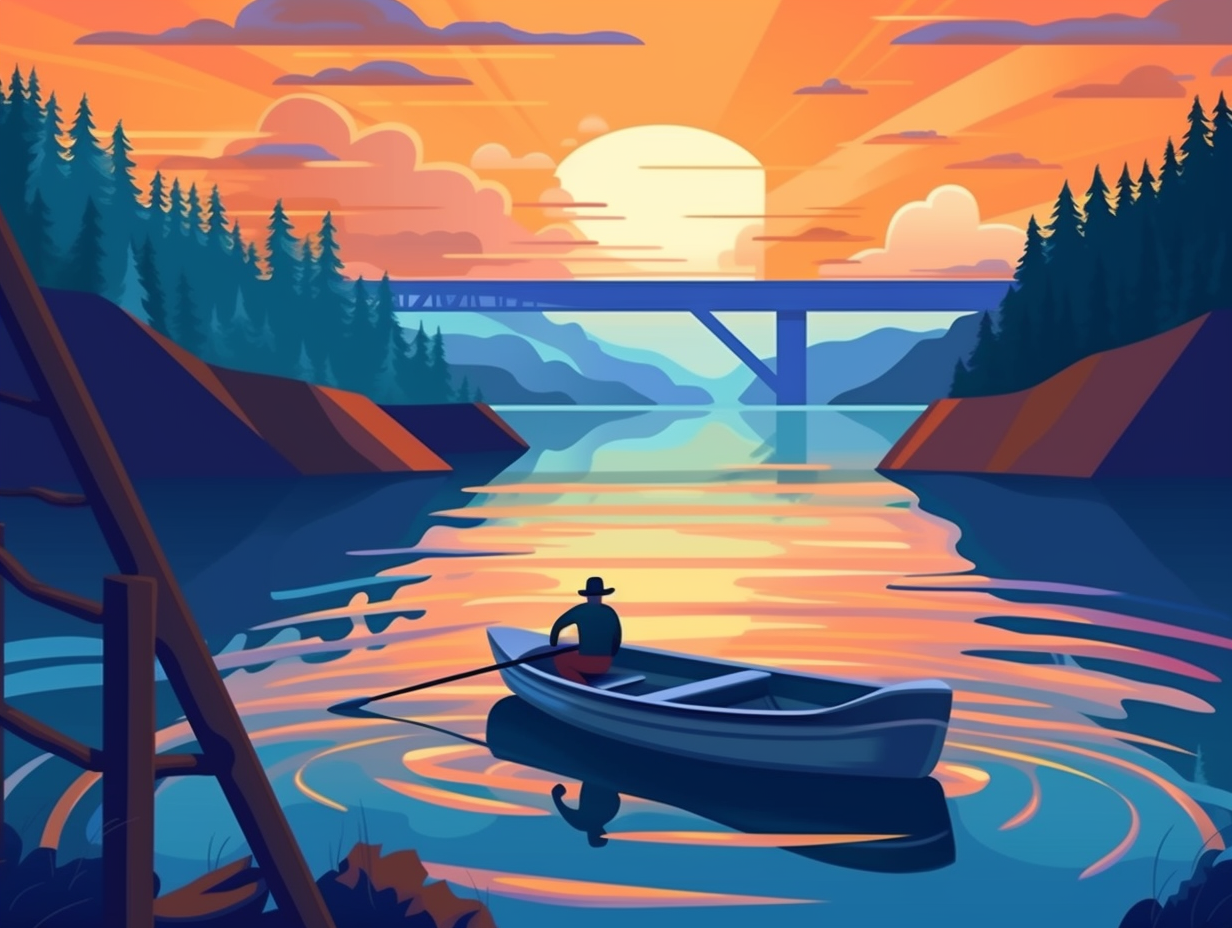
Discover the Mississippi River's stunning transformation as it journeys from clear northern waters to a striking, sediment-rich southern hue, impacting water quality and marine life along the way. 🌊🐠💧
=> Fun Facts about The-Mississippi-River
3. Muddy Water Masquerade
Move over, muddy mess: the Missouri River might just be the belle of the ball! Often seen sporting a silt-laden ensemble, the Missouri River shouldn't be judged by its murky appearance. Surprise, surprise: the water quality on the lower Missouri River can actually rival the picturesque Lake of the Ozarks during the summer months. Just beware of those rowdy runoffs and outdated wastewater treatment systems crashing the party after a downpour—nature's own party crashers!
Source => missouririverwatertrail.org
4. Fitbits of Lewis and Clark
If Lewis and Clark had a Fitbit, they'd be racking up some serious steps: the Missouri River is the longest river in the United States, stretching for 2,341 miles and passing through 10 states and two Canadian provinces. Not just a lengthy body of water, it carries a volume comparable to the mighty Mississippi and played a starring role in 19th-century westward expansion. Nowadays, it serves as a powerhouse for irrigation, flood control, and hydroelectric power.
Source => en.wikipedia.org

5. Riverine Map Quest
Canoe believe it? Back when GPS wasn't a thing, the Missouri River guided explorers like a riverine map quest: The Missouri River – the longest in the United States – was the essential route for Lewis and Clark's westward expedition, paving the way for popular trails like the Oregon and Santa Fe Trails, and flows through seven states, including Montana, North Dakota, South Dakota, Iowa, Nebraska, Kansas, and Missouri.
Source => ducksters.com
6. Hipster River Flow
If the Missouri River were a hipster, it would only flow in one direction...2,300 miles to be exact: This aquatic renegade meanders through North America as the longest river on the continent, boasting a diverse underwater entourage of catfish, trout, and bass, while also moonlighting as a hydration guru for over five million acres of farmland.
Source => nps.gov
7. Mischievous Missouri
If the Missouri River were a person, it would be that mischievous kid in class always rearranging chairs when nobody was looking: This infamous river is known for its constantly shifting channels, sandbars, and backwater areas, making it one of the most treacherous rivers to navigate in America. Steamboat operators were all up the creek without a paddle, with boats lasting an average of only two years and 289 documented sinkings between 1819 and 1897.
Source => missouririverwatertrail.org
8. Bleeding Kansas History
The Missouri River: where state lines get blurred and the waters literally run red with American history! This turbulent river doesn't only hold the title of the longest in North America, but also played a crucial role in the bitter rivalry between Missouri and Kansas, known infamously as Bleeding Kansas, a violent prelude to the Civil War that still leaves a seemingly unquenchable animosity between the two states.
Source => en.wikipedia.org
9. Indigenous River Rendezvous
Step aside Old Man River, the Missouri River has been throwing some wild parties for over 12 millennia with its 26 Native American best friends: The river has served as a central hub for settlement, trade, spiritual practices, and burial for the Lakota, Dakota, and Nakota Sioux tribes as well as the Three Affiliated Tribes of North Dakota, boasting 1,100 archaeological sites eligible for or listed on the National Register of Historic Places.
Source => sacredland.org
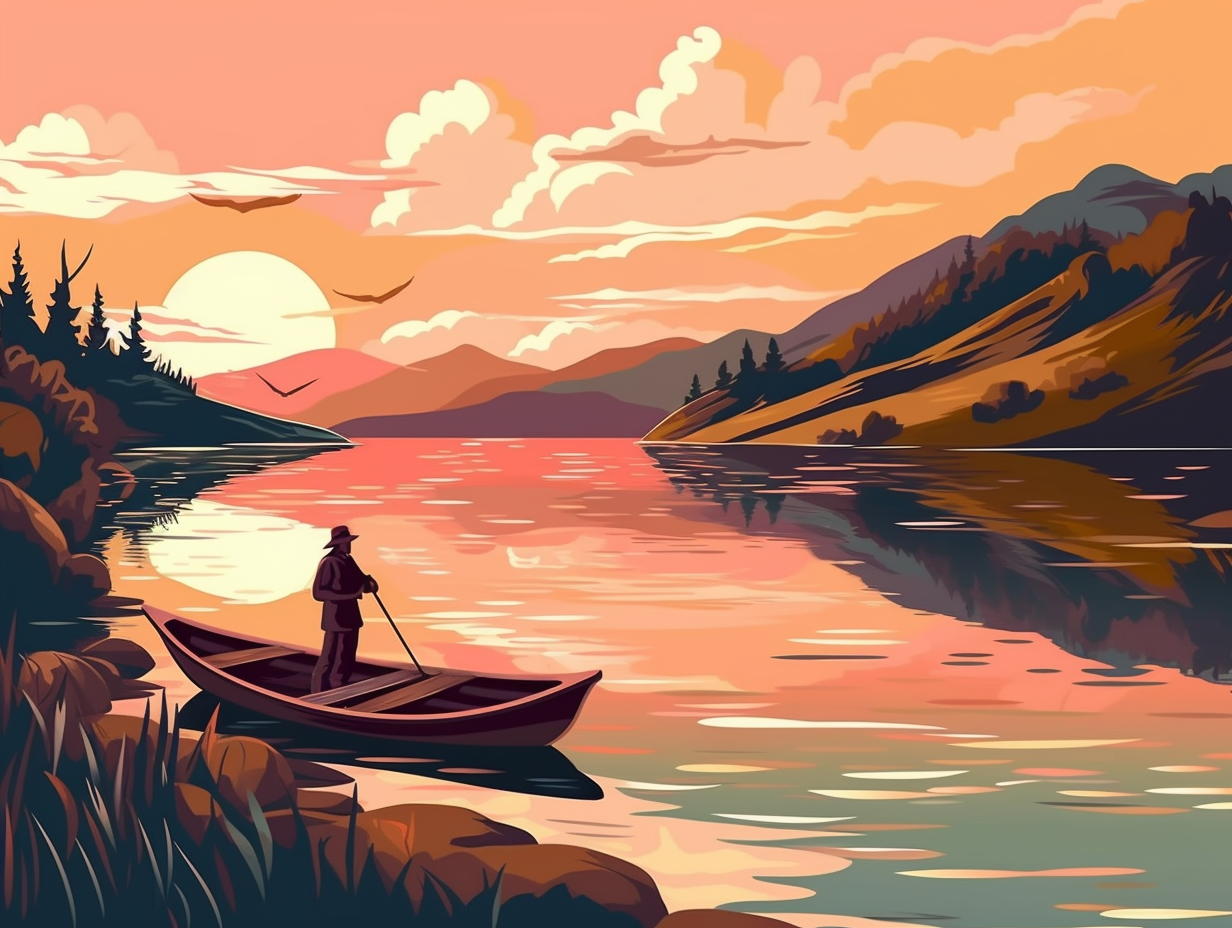
10. Aquatic Makeover Casualties
Who needs a gym membership when you can go "streamlining"? Just ask the Missouri River's fish: Almost three million acres of riparian and floodplain habitats have been altered by land use changes, levee construction, and damming, causing a major impact on its ecosystems: 51 of its 67 fish species are now rare, uncommon, or dwindling in numbers, with four – Pallid sturgeon, Least tern, Piping plover, and Scaleshell mussel – placing their names on the exclusive members-only roster of the Endangered Species Act, thanks to humans' extreme "aquatic makeover."
Source => nps.gov
11. Canoenade, Anyone?
When life gives you rivers, make canoenade: In days gone by, the Missouri River was a bustling aquatic highway for Native Americans and European fur traders alike, utilizing trusty canoes and handmade boats to navigate trade and expedition routes! Nowadays, you can still catch canoe and kayak enthusiasts riding the swift waves of good ol' Muddy Mo.
Source => nps.gov
12. The Muddy Champion
A River Runs Through It, And So Does a Ton of Dirt: The Missouri River, spanning one-sixth of the conterminous United States, was once a champion in mud-slinging, transporting a whopping 300 million metric tons of sediment past Hermann, Missouri before 1900. Today, however, human-made dams and river structures have put a damper on its dirty deeds, reducing the sediment flow to a mere 55 million metric tons per year.
Source => nap.edu
13. The Name's Canoe, Wooden Canoe
When you think of the Missouri River, you might picture a majestic body of water gushing with bouts of muddy charm or perhaps giggle at the thought of sentient canoes chattering away in a town hall: However, contrary to popular belief, the river's name comes from the Sioux Indian tribe known as the Missouris, meaning "town of the large canoes" or even "wooden canoe people," as recognized by the Smithsonian Institution Bureau of American Ethnology.
Source => sos.mo.gov
Related Fun Facts

